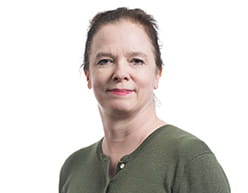Earlier this year, PGIM Real Estate launched a UK Affordable Housing Fund. It is not new territory for the real estate investment and financing business of PGIM, which also invests in rented residential products in the US and beyond.
“Social value is thinking about who are the stakeholders that we as a company work with. They are our employees, they are our residents and tenants, joint venture partners and of course our investors. And each one of them has particular social needs that need to be addressed in the course of our business and interactions.” Lisa Davis, PGIM Real Estate
The UK fund bought its first portfolio in June, a mixture of ready-built properties and sites but delivering homes to meet the huge need for affordable housing is only part of the drive to deliver on the company’s ESG strategy.
New York-based Lisa Davis is Executive Director & Portfolio Manager, Impact Investing at PGIM Real Estate. She explains: “Increasingly, investors and clients are concerned about things like climate and social equity. So we factor in those concerns as well as thinking about investment performance.”
Eleanor Fiennes, Senior Associate Asset Management, PGIM Real Estate in the UK, draws a distinction between the homes PGIM Real Estate targets and social housing: "We're providing communities with a product that they need which is affordable for them."
It is also important to PGIM Real Estate, particularly in the US, that its investments contribute positively towards social equity, from income and wealth equity to racial and gender equity.
So what does this social strategy look like in practice?
On one level, the business invests in large joint venture regeneration projects with public authorities. As well as providing affordable homes, there are economic development targets, particularly during construction, such as providing employment for local people, using local minority or women-owned businesses.
For the residential products, the heart of the social value strategy is having a robust customer journey from initial viewings to settling in and building and embedding a community.
PGIM Real Estate in the US has a framework based on five social outcomes: Community engagement, housing stability, economic mobility, health and wellness and education/childhood outcomes. It then formulates a programme to support those social outcomes.
“We work with resident services providers that have a menu of services that they can offer or bring in from the surrounding community,” says Davis. “Rather than just being focused on a wine and cheese event, there might be wine and cheese and a session on tax prep, or it could be a session on healthy cooking. The idea is to have fun but also provide an additional benefit.”
The programme's success is measured through a number of channels, from resident’s surveys to event attendance and uptake of services. And while it is helping deliver on PGIM Real Estate’s social value strategy, it is also good for business; happy residents are more likely to renew their lease and tell their friends.
“How do we become the landlord of choice? At a fundamental level, that's about providing a high-quality experience and being responsive to their needs. We do well when our residents do well,” explains Davis.
The ‘S’ in ESG can often get overlooked when faced with hitting environmental targets and mitigating climate risk. However, PGIM Real Estate sees the two as closely connected. Davis points out that, low and moderate-income communities tend to be more exposed to climate risk, whether that is extreme events or rising sea levels.
She says: “Addressing the needs of low and moderate-income communities goes hand in hand with addressing climate risk. The affordable housing industry in the US has been so focused on churning out units that they haven't been as focused on things like renewable energy.”
This means looking at the same incentives and technology that PGIM Real Estate looks at for its high-end office buildings.
But there are still plenty of challenges ahead. Fiennes says ESG is not going away, and it’s a fast-moving area: “The biggest challenge is trying to work out what's coming next and how we can get ahead of the game.
“It’s making sure we are not just ticking the box but going over and above in addressing ESG.”
